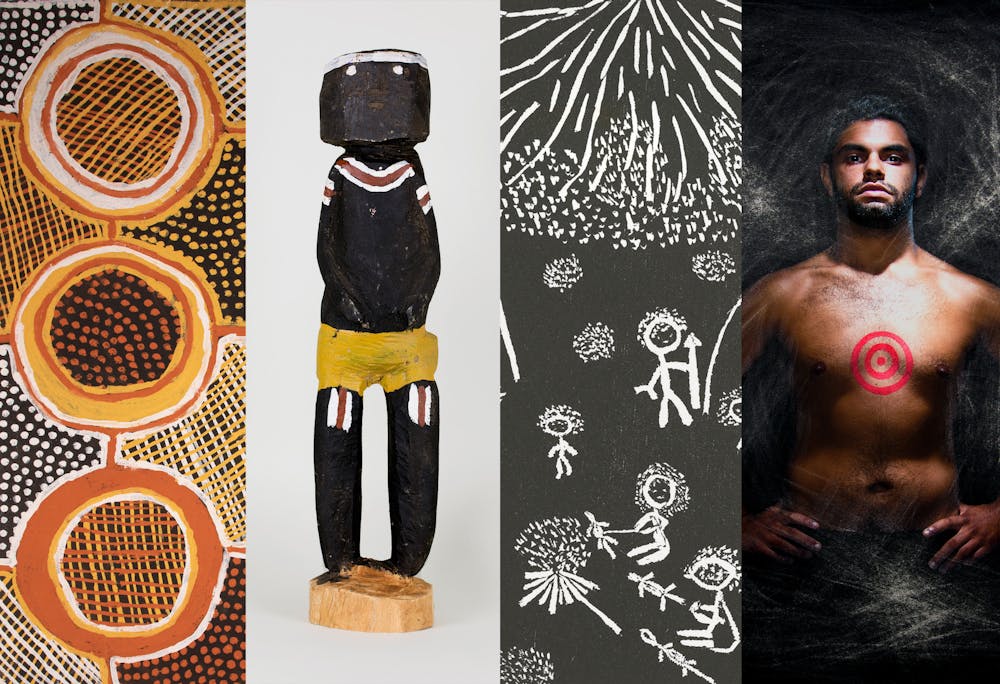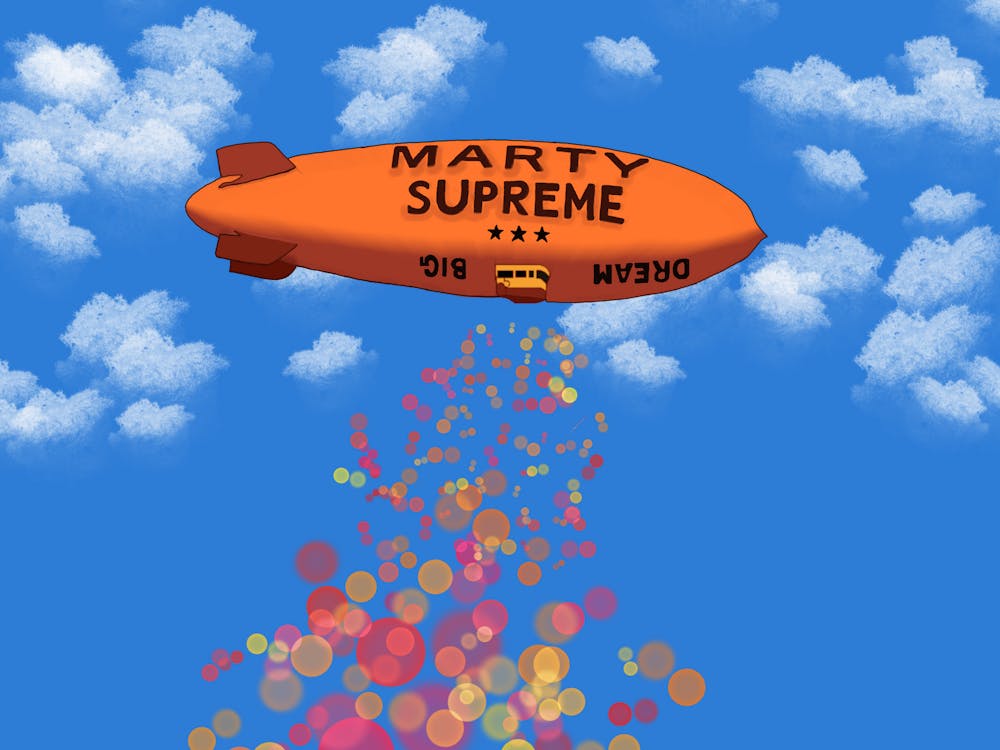The Kluge-Ruhe stands apart from all other art collections at the University — it is the only museum outside of Australia dedicated to showcasing Indigenous Australian art. The collection encompasses a wide variety of identities under the umbrella of Indigenous Australian art, from Aboriginal to Torres Strait Islander to Tiwi Islander. The exhibit “Performing Country” displays a wide variety of mediums including body paintings, woodcut prints and canvas paintings that explore the performance of country and culture.
Brenden O’Donnell and Emmy Monaghan, co-curators of the exhibit and graduate College students in the art department, said that they did not necessarily want to assign their own meaning to potential pieces for the exhibit, and instead hoped pieces would assert their own meanings for viewers.
O’Donnell and Monaghan ultimately decided on the theme “Performing Country,” wanting to explore this complex idea of what it means to create art for country within the constantly unfolding traditions of Aboriginal art.
“The multiple meanings behind ‘performing' are essential to understanding some of those conversations that are happening in the galleries,” O’Donnell said. “[When] we're talking about performing ceremony, we're talking about performing in terms of the physical act of making the art.”
“Performing” is also about how the artist achieves certain visual effects as well as the performance of identity, O’Donnell said.
The physical, tangible performance of artmaking that is so integral to many aboriginal cultures can be felt most distinctly in this exhibit's feature of the legendary artwork of Emily Kame Kngwarreye, entitled “My Country.”
In this painting, the physical reverberations of Kngwarreye’s brush strokes can be seen throughout the interweaving raw stripes of color down the canvas, which stretches the full length of the wall. Each pigment is pressed so hard into the canvas that there are upturned indents of the physical brush and even some left behind bristles.
According to a nearby plaque, Kngwarreye’s art is inspired by the immensity of the desert landscapes she grew up around and her need for abstraction in the face of such a stretch of land. This along with the inspiration of medium from her role as a community elder and as a ceremonial body painter inspired Kngwarreye’s very physical and intimate artistry. In every dig of the brush or new locus of color created directly on the canvas, the inspiration to bear homage to her land and country is palpable.
In the next room of the exhibit, onlookers are welcomed into another fold of the meaning of performance with the “Pwoja Pukumani Body Paint Design” of Pedro Wonaeamirri.
The Pukumani ceremony is central to the Tiwi culture, where community members come together to guide deceased brethren into the spirit world to ensure their reincarnation. This ritual involves the communal application of paint with a Pwoja, a type of comb, used to create intricately placed body paint designs called jilamara.
These body paint designs of Wonaeamirri are stagnant when put to canvas, but in their original cultural context, these intricate lines and dot placements tell stories of love and kinship. Those who knew the deceased most intimately must be fully covered to the point of being unrecognizable for the fallen to move into the spirit world.
With Pedro Wonaeamirris's entry into this exhibition, there is a distinct sense of movement from both the physical making of the art and from its connection to community. The communal ritual of painting each other and of the days and nights of song and dance are also intended to guide the spirit forth in life, death, and celebration.
The next layer of performance examined in the exhibit is performative identity, specifically, the identity others stereotypically place on Aboriginal people told through Tony Alberts's “Brothers Moving Targets.” Abert commented on the inspiration for this mixed media piece of scarred pigment photography.
“The issues I make art about, including oppression in many forms, are global,” Albert said. “Even when the source material is local, they are part of a connected global conversation.”
According to the work’s display label, the oppression he is referencing in this specific instance was the police shooting of two Aboriginal teenagers in April 2012 in Sydney, within the overall context of police brutality.
The sentiment of pain is communicated through the photo image of a male figure standing tall, head tilted up, shoulders pulled back and eyes set dead straight with a spotlight centered on his chest. The figure stands alone, proudly, against a black background with white scratches scarring the photograph's surface as if protesting or clawing away from the forced societal identity.
At the center of the photo, a striking red concentric circle is painted on the male figure’s chest. These circles are Aboriginal symbols of identity and resilience often meant to denote home, but when contextualized through a modern lens, they read as a target on a brown body.
The Kluge-Ruhe will be featuring “Performing Country” until March of 2024, with the option of guided tours available to be booked on their website.







